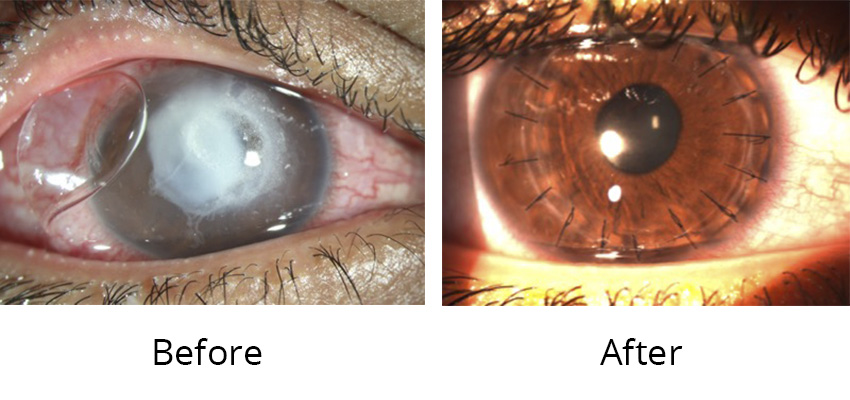
(305) 442-0066
Hialeah Office
North Miami Office

With Deep Anterior Lamellar Keratoplasty (DALK), the front layers of the cornea (the stroma and epithelium) are removed but the innermost layer (the endothelium) is left in place. The procedure is suited to people with a healthy endothelium who are suffering from conditions that affect the other layers, such as keratoconus or corneal scarring. Traditionally, this has been treated with a full-thickness transplant; however, DALK is advantageous because the patients own endothelium is retained so the rate of graft rejection is lower and the cornea is stronger than with a full-thickness transplant.
Occasionally, the separation of the endothelium does not work as intended. In such cases, the surgeon can perform a full thickness corneal transplant. There is a slightly higher chance of donor tissue rejection, but the visual outcome and recovery is generally very good. Whether or not a standard corneal transplant will be required depends on your individual cornea, and your doctor will discuss this with you further.
It is important to understand that even after successful surgery the corneal transplant requires considerable time to adjust to its new environment. Therefore your vision may not begin to improve for several months and sometimes longer (up to a year). After the transplant has healed and the appropriate number of sutures have been removed, spectacles or a contact lens may be required to achieve your best vision.
Deep anterior lamellar keratoplasty is an involved procedure that requires long term attention and follow up. For the vast majority of our patients whose vision has been restored by corneal transplantation, the effort has proven to be well worthwhile.

2441 SW 37th Avenue
Miami, FL 33145
(305) 442-0066

202 E 49th Street
Hialeah, FL 33013
(305) 442-0066

2050 NE 163rd Street North
Miami Beach, FL 33162
Direct Line (786) 708-8372